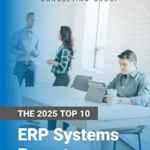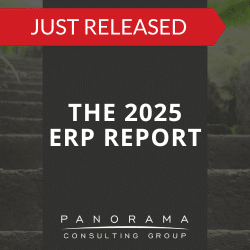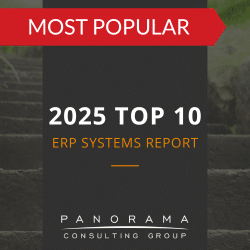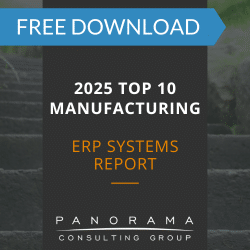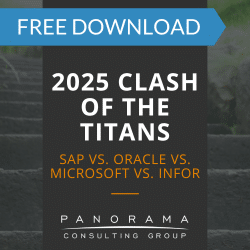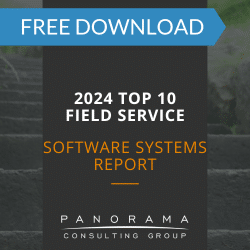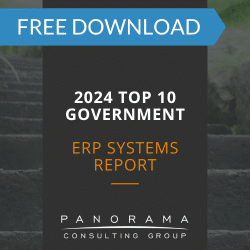- ERP customization can deliver a better process fit but can introduce long-term risks, such as higher costs, upgrade challenges, and reduced vendor support.
- Configuration uses built-in tools to adapt ERP systems without altering core code, making it a safer and more sustainable option for most organizations.
- Organizations with unique regulatory or operational needs may require custom ERP solutions to maintain compliance or competitive advantage.
- Successful ERP implementations balance software capabilities with organizational readiness.
For organizations undergoing ERP system selection, one of the most strategic decisions they will face is whether to adapt their business processes to fit the software—or to adapt the software to fit their existing processes. This fundamental question is often a choice between adopting best-in-class capabilities and pursuing ERP fit with current operations.
As organizations weigh ERP customization vs. configuration, the implications for long-term flexibility, cost, and risk become central to the discussion.
The 2025 Top 10 ERP Systems Report
What vendors are you considering for your ERP implementation? This list is a helpful starting point.
Understanding ERP Fit and Best-in-Class Functionality
ERP fit refers to how closely a software system aligns with an organization’s existing processes, data structures, and business needs out of the box. A good fit reduces the need for changes—either to the software or to internal operations—during implementation.
On the other hand, best-in-class functionality often describes ERP software that provides advanced or specialized features through third-party modules, industry-specific solutions, or customization. These solutions may not align perfectly with existing workflows, but they can enhance performance in specific areas, such as supply chain analytics, customer relationship management, and financial forecasting.
The tension between these two goals leads many organizations to confront the question: should we change the business to match the software, or change the software to match the business?
ERP Customization vs. Configuration: What’s the Difference?
To answer that question effectively, it’s essential to understand the difference between configuration and customization:
- Configuration involves adjusting the ERP system using built-in tools and settings. It’s a standard part of implementation and poses minimal risk. For example, setting user roles, defining workflows, or choosing between available reporting formats are all configuration tasks.
- Customization, by contrast, involves altering the underlying code of the ERP system or building new features to meet unique business needs. This includes developing custom reports, interfaces, and business logic that goes beyond what the software offers natively.
While customization may deliver a better initial fit, the long-term disadvantages of ERP customization—higher costs, upgrade challenges, vendor support limitations—can be significant.
When Does Custom ERP Make Sense?
There are scenarios where customizing ERP software is not only justifiable but essential to maintain competitive advantage:
- Unique Operational Models: Organizations with highly specialized processes—such as a manufacturer using proprietary production methods—may require custom ERP software to capture that complexity.
- Regulatory Requirements: Government agencies or highly regulated industries might need custom functionality to comply with mandates that standard ERP offerings don’t support.
- Market Differentiation: Companies that differentiate through service delivery or product innovation may need ERP systems tailored to their customer experience strategies.
For example, a defense contractor might need to track compliance with highly specific U.S. Department of Defense reporting structures. In such a case, developing custom reporting modules may be necessary to ensure regulatory compliance and audit readiness.
Similarly, a specialty food distributor might need to track batch-level expiration dates and perform real-time shelf-life forecasting, which isn’t supported by many off-the-shelf ERP systems. Here, custom extensions can deliver critical value that configuration alone cannot achieve.
The Risks of ERP Customization
Despite its potential benefits, customizing ERP software introduces substantial risks:
1. Cost Overruns
Custom code is expensive to develop and maintain. During implementation, development efforts can cause timelines to slip and budgets to balloon. Organizations often underestimate the time and skill required to properly scope, build, and test customizations.
2. Upgrade Challenges
Perhaps the most common long-term risk of custom ERP software is reduced upgradeability. Vendors frequently release new versions of their systems, and heavy customizations may break with each upgrade. This results in additional testing, rework, or deferral of upgrades—leading to technical debt.
3. Vendor Support Limitations
When organizations go beyond supported functionality, they may lose access to vendor support. Troubleshooting issues can become more difficult, especially when core code has been altered.
4. Knowledge Gaps
Customizations are often built by third parties or internal experts. When those individuals leave the organization, knowledge about how to maintain or update the custom functionality may be lost, creating a dependency risk.
Our ERP consulting team often advises clients to treat customization as a last resort—only pursuing it when there is a clear ROI and no configuration alternative exists. We guide organizations through detailed fit-gap analysis to determine whether customization truly delivers a strategic advantage or simply reinforces legacy processes.
When to Adapt Your Processes Instead
While custom ERP development may seem attractive, many organizations benefit more from adapting their internal processes to align with best-practice workflows offered by the ERP system. This strategy often supports faster implementation, lower total cost of ownership, and smoother upgrades over time.
For example, a public utility provider might choose to adopt standardized procurement and work order processes recommended by the ERP vendor to accelerate their digital transformation without overextending their IT resources.
When our ERP consultants help clients through ERP system selection, we emphasize the importance of evaluating process standardization opportunities during the early stages of business process management and requirements gathering. This ensures that customization decisions are grounded in long-term value—not short-term convenience or resistance to change.
The Role of Change Management in the Fit vs. Best-in-Class Debate
A key factor in this decision is an organization’s readiness to change. Adaptation requires cultural alignment, training, and executive sponsorship. If end-users are unwilling or unable to adjust to new processes, even the best software implementation can fail.
That’s why we advise organizations to initiate organizational change management before the software selection process. By preparing teams for transformation early, organizations can build a culture of adaptability that reduces reliance on customization.
Making the Right Choice for Your Organization
Ultimately, the decision between ERP customization vs configuration is not binary—it’s about finding the right balance for your specific goals, constraints, and capabilities. Organizations should:
- Identify non-negotiable requirements: What truly sets your operations apart?
- Prioritize future flexibility: Will this customization hinder future upgrades?
- Assess change readiness: Are teams prepared to adjust to new workflows?
- Analyze total cost of ownership: Will maintaining custom code outweigh the initial benefit?
This is where an independent partner like Panorama can help. As an impartial advisor, we guide clients through unbiased ERP selection, helping them weigh customization risks against process adaptation opportunities. We leverage proven frameworks to assess business needs, manage organizational change, and ensure long-term ERP success.
Partner With an ERP Expert
Choosing between ERP fit and best-in-class functionality is a strategic decision that impacts the long-term trajectory of your digital transformation. While customizing ERP can offer tailored solutions to unique challenges, the ERP customization risks—especially around cost, complexity, and upgradeability—should not be underestimated.
Whether you lean toward custom ERP software or aim to standardize with configurable solutions, thoughtful planning and expert guidance are essential. Contact Panorama to explore how our independent ERP consultants can help you find the right balance between fit and functionality—without compromising your long-term vision.
